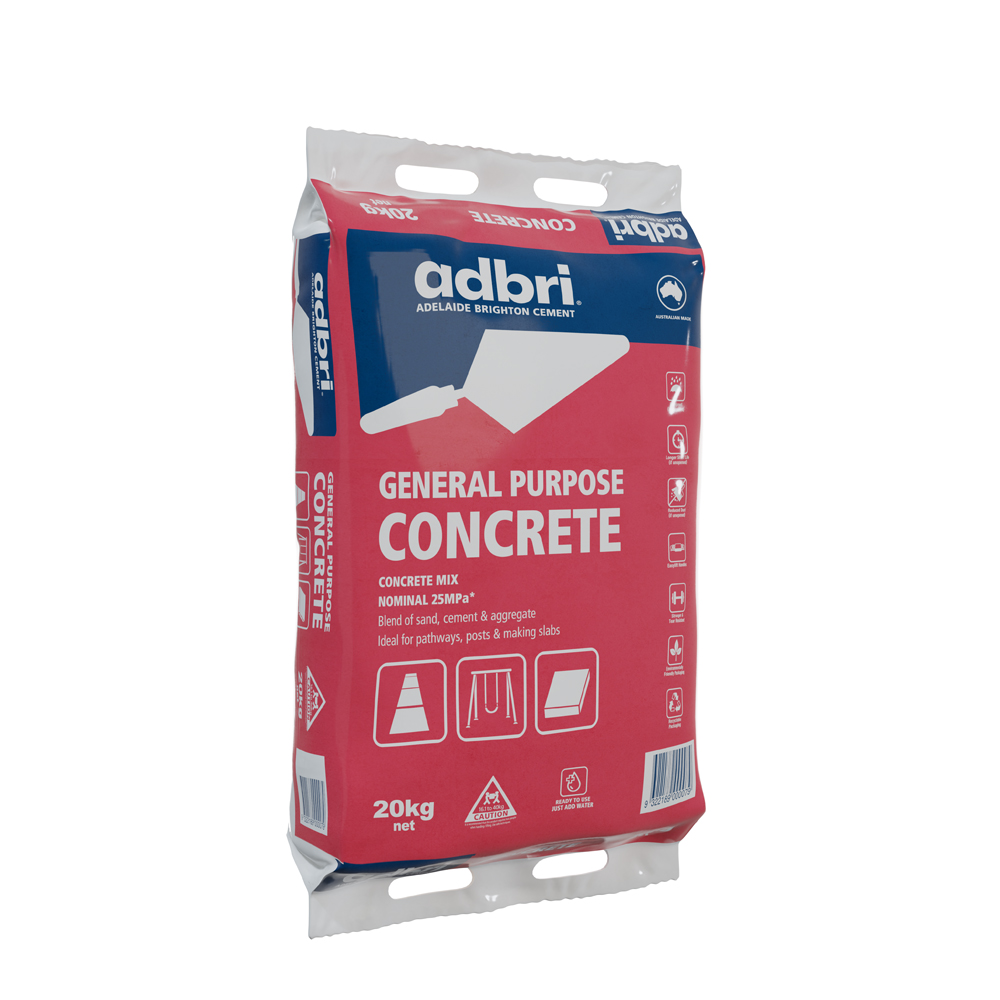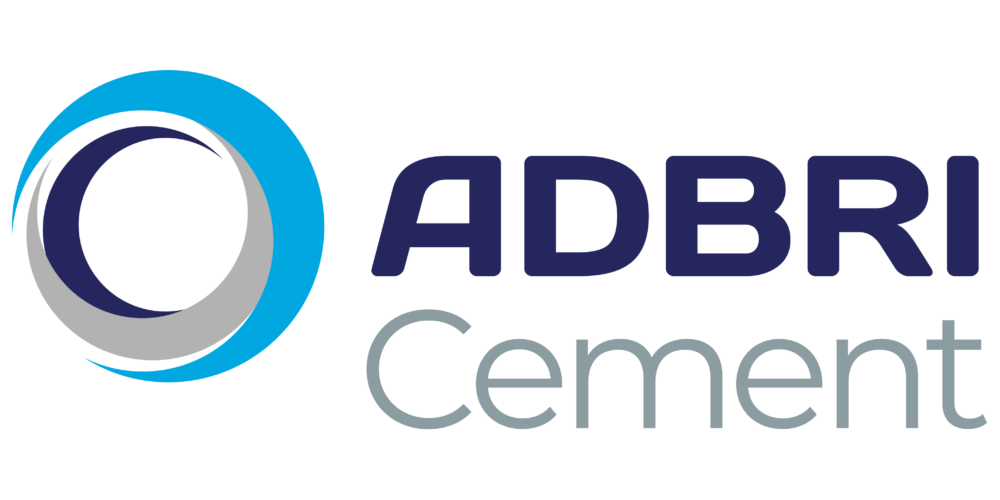Concreting

Materials & Equipment – Essential
| • Adbri Cement Concrete Mix (20kg or 30kg bag) | • Mixing vessel (wheelbarrow/hard non-absorbent surface/concrete mixer) | • Shovel |
| • Subbase, bedding sand/polyethylene sheet | • Plate compactor/tamping bar | • Formwork |
| • Measuring jug/graduated bucket | • Screeding tool | • Curing agent/hessian/plastic sheet |
Materials & Equipment – Optional
| • Crack control steel mesh and plastic chairs | • Stiff bristled broom | • Bull float |
| • Wood/steel float | • Edging and jointing tool, circular saw | • Vibrating poker/screed |
Safety
When working with Concrete, wear protective clothing, strong boots, gloves, dusk mask, and eye protection.
Manual handling of bag products without due care and attention may result in personal injury. Unless you have been trained in manual handling methods it is suggested that you share the load with another person.
For more safety information refer to the Concrete safety data sheet.
Site Preparation
- Mark out the borders of the area to be concreted.
- Establish the desired finished level.
- Excavate ground factoring subbase, bedding sand (if used), and concrete thickness.
- Place layer of subbase and compact it to 100 mm thick.
- Cover subbase with either polyethylene sheeting or 20 mm layer of compacted bedding sand.
- Erect formwork and brace it (should not flex or move when concrete is placed).
- If crack control steel mesh is required, position on plastic chairs so that it is raised to sit between the centre and top third of the slab. Ensure a minimum cover to reinforcement of 40 mm is maintained (i.e. 40 mm of concrete above the steel).
Mixing Concrete
- Empty bag of Concrete into mixing vessel.
- Using a measuring jug/graduated bucket, add water gradually to the concrete and mix thoroughly until the desired workability is achieved.
- Do not add too much water as it will weaken the concrete. See table 1 for maximum water additions.
- Do not mix more concrete than can be used within 45 minutes
| Bag size | Max water per bag | Bags/m2 @ 100 mm thick | Bags per m3 |
|---|---|---|---|
| 20 kg | 2.3 litre | 11 | 110 |
| 30 kg | 3.5 litre | 7 | 70 |
Concrete placement
- Lightly spray the pour site with water prior to concrete placement, being careful not to create excessive ponding.
- Start placing concrete from one edge of the formwork and progressively work away from this point being careful not to move crack control steel mesh or formwork.
- Use a shovel to spread and tamp the concrete as required, ensuring edges and corners are filled.
- Aim to place the concrete at a height that is slightly proud of its final position.
Concrete compaction
Why is compaction important?
Compaction helps the concrete settle and expel entrapped air, which maximises strength and durability.
Methods of compaction:
- A screed levels and compacts the top layer of concrete only (not full depth). Place the screed on top of the formwork and slowly work it across the surface of the concrete in a sawing motion.
- To facilitate full depth compaction of concrete, it is recommended to use a vibrating poker prior to screeding.
- Start at one corner of the slab.
- Swiftly place the poker into the full depth of concrete and vibrate for approximately 10-15 seconds, taking care not to touch formwork or crack control steel mesh.
- Slowly remove the poker from the concrete to reduce the risk of creating a hole/weak spot.
- Systematically vibrate the entire area of concrete. The required intervals will become obvious as a radius of air bubbles surrounding the poker, which indicates compaction has occurred. For best results, ensure these areas overlap.
Concrete initial finish
- Screed the concrete level with the formwork as described in section 6 followed by a number of passes with a hand/bull float (if required). The concrete can then be left to harden if this level of finish is sufficient. However, if a higher quality is required see section 8.
Concrete final finish
- Bleed water may appear on the surface of concrete after the initial finish (section 7), but will evaporate over time. Excessive quantities can be removed by dragging a garden hose across the concrete surface. Do not commence final finishing if bleed water is present.
- Once bleed water has dissipated and concrete can support foot traffic with minor surface markings, final finishing techniques can be applied.
- For a smooth texture, use a steel trowel (hand/power trowel). Trowelled surfaces tend to be dense, hard wearing, and durable, but also slippery when wet.
- A textured finish, such as brooming/wooden float will produce a non-slip surface.
Edges and joints
- The use of an edging tool around the perimeter of the slab provides a neat rounded edge, less prone to chipping.
- For larger slab areas, joints should be formed in fresh concrete using a jointing tool or saw cut the next morning in line with the following:
- Maximum 1:1.5 slab aspect ratio (i.e. length no more than 1.5 times the width).
- Joint spacing no greater than 25 times the slab thickness (i.e. 100 mm slab thickness should have a joint spacing of no more than 2.5 metre).
- Recommend joint depths 25-33% of total slab thickness.
- Joints can be left as formed or appropriately sealed/filled.
Curing Concrete
Why is curing important?
Curing concrete keeps it moist for a period of time (typically 3-7 days), which maximises cement hydration and subsequent strength development. Concrete cured correctly will be stronger, more durable, and less likely to crack.
Concrete should be cured immediately after finishing operations are completed.
- If possible, leave formwork in place for the duration of the curing period as this will help reduce moisture loss.
- Spray on curing compounds are generally considered the most practical method. However, these products may need to be removed (stiff brush/high pressure water) from the concrete surface prior to the application of certain finishes such as paint or adhesive floor coverings.
- Alternatively, use moist hessian or plastic sheeting to cover the concrete.
